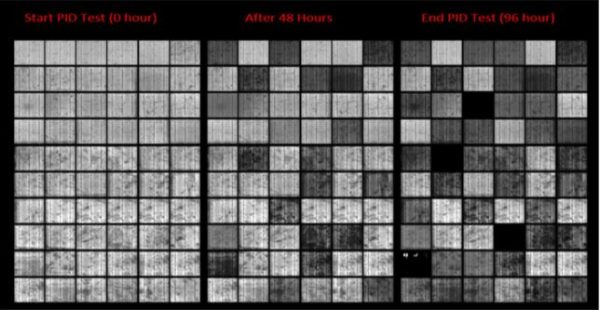L R AS Published on Sunday 6 February 2022 - n° 392 - Categories:cells, panels
A new study on the potential degradation of panels
For many photovoltaic systems, potential-induced degradation (PID) is one of the main causes of panel degradation, caused by the high voltage between the encapsulants and the front glass surface,
which is earthed via the cell substructure or frame.
PID increases as panels age. It does not affect all cells, but they cannot be repaired. Power losses can be significant. If the power loss was 8% in the initial state of the PID test, power losses would probably be in the order of 30% to 50% after four days.
Electroluminescence images were taken during the experiment. Only a few solar cells were unaffected: their output power losses did not exceed 5%. "This suggests that these cells have been influenced by lower shading rates, heat, humidity or any form of cracking during their working life."
After 96 hours, the PV panel showed 30 hot spots; four panels experienced a significant temperature rise to 40 degrees Celsius; four panels were affected by a significant temperature rise to 45°C.

"At the end of the PID experiment, 60% of the PV panels examined failed the reliability test," found the academics. "In addition, at the millimetre scale, we found that PID can impact solar cells with various damages, such as discontinuity of cell fingers and busbars."
PV Magazine 4 February 2022




